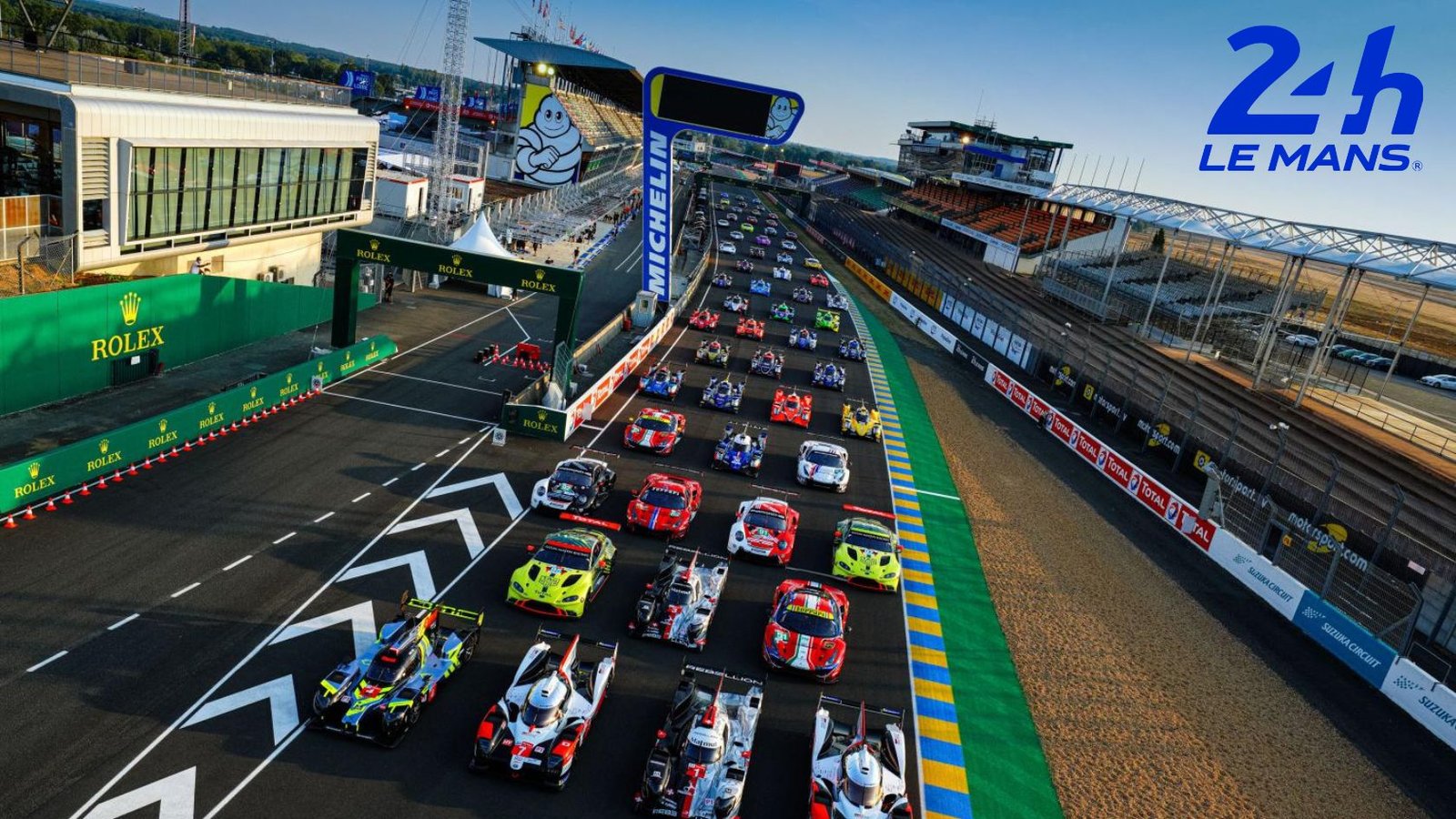24 hours of Le Mans Race
24 hours of Le Mans Race Is one of the most reputable and esteemed races—along with the Monaco Grand Prix and Indianapolis 500—that form the Triple Crown of Motorsport, The oldest endurance racing event in the world, which has been active since it was first held in 1923 near Le Man’s town in France. Since then, the Race has been held annually on the ‘Circuit de La Sarthe,’ a 13.6 kilometre (8.5-mile) combination of purposefully built race tracks and public roads near the town of Le Mans, France.
24 hours of Le Mans Race is about which car races for 24 hours straight and covers the largest distance in the given time, battling not only their competitors but also the endless hurdles of the circuit, the changing weather conditions, and drivers pushing their high-performance cars to their limit.
Purpose Of 24 hours of Le Mans Race
Le Mans was launched when the prevalent form of motorsport was ‘Grand Prix Motor racing.‘ Le Mans was initiated to present a different test for car companies. It aimed to draw attention to building cars that were reliable as well as sporty, which led to technological innovation in manufacturing fuel-efficient cars that focused on reliability, which was needed in endurance racing. In addition to this, the layout of the circuit encouraged the manufacturers to concentrate on factors like better aerodynamics and stability at high speed due to the blend of public roads in the circuit.
Thrill of Speed and Endurance
The Le Mans race is quite distinguished from other races owing to its unique format of Race amidst the prevalent traditional format of other races. Unlike other races, where distance is fixed, Le Mans race’s format follows that the car which will cover the greatest distance in 24 hours wins the race. This requires the driver to carefully balance speed, fuel efficiency, and reliability.
Thus the cars competing at Le Mans are engineered with much thought and effort as a result of which these cars hold the capability of reaching speeds of 200 mph (320 km/h) even on the Mulsanne Straight, this combination of raw power and precision handling as the drivers navigate the circuit’s tense curves and corners is a sight to behold .
But speed is not the only prominent factor of this battle. The actual test of Le Mans is the endurance of the driver and their cars.

As the race commences roughly around Mid June and continues for a course of full day and a night, the vehicles are faced with immense stress, heating of engines and the wear and tear of the tires and even suspension. In such a case, drivers require laser-like focus for hours, making split-second decisions and adjustments to keep their cars running at the limit.
Also Read – Le Mans Disasters: 5 Historic Crashes That Sent Cars Flying
A Rich History and Legacy Of 24 hours of Le Mans Race
The 24 Hours of Le Mans is the oldest active sports car race in endurance racing. It was first held in 1923, and over the years, the annual Race has witnessed numerous triumphs and tragedies, with legendary drivers and manufacturers etching their names into the event’s prestigious history books.
From the Race’s humble beginnings, in which cars were little more than modified road vehicles, racing for 24 hours non-stop, to the modern day of highly-specialised prototypes and hyper-cars, the 24 Hours of Le Mans has always been at the leading edge of automotive innovation. Manufacturers have spent millions on their race programs, using the event as a test bed for new technologies that often found their way onto production cars.
The Enduring Appeal of 24 hours of Le Mans Race
The Appeal of Le Mans 24 Hours has lasted as one of the most prestigious and challenging races in the world since it was first launched and with good reason. It is not only a test of the automobile but of a man as well. It’s a test of the co dependence of man and machine, of human spirit and speed and innovation.
It is the ultimate opportunity for a driver’s career to compete at Le Mans, and to ace this opportunity cements their name in Motorsport history besides the names of other legends of Motorsport like Tom Kristensen, who holds the record with nine victories at Le Mans.
As for the manufacturers, the 24 Hours of Le Mans offers an opportunity to showcase their technological advancements and growth to the global automobile market because of the esteemed status and marketing value that a Le Mans victory holds. It makes the Race an event that the world’s top automakers aspire to win.
And for the large spectrum of Motorsport enthusiasts, the 24 Hours of Le Mans is a show unparalleled by any other. It is a festivity that celebrates their enthusiasm and pure joy for motor sports.
The fans who visit to Le Mans are treated to memorable experiences whether it is of cheering on their favourite drivers or admiring the engineering achievements on display or just simply soaking themselves in the atmosphere of Le Mans, once they visit Le Mans, the impact of it leaves an indelible mark on their hearts.
Conclusion
The 24 Hours of Le Mans is a testament to the human spirit, a celebration of technological innovation, and a global phenomenon that has captivated the hearts and minds of Motorsports enthusiasts for nearly a century. As the Race prepares to celebrate its 100th anniversary in 2023, the legacy of Le Mans continues to inspire and captivate, ensuring that this legendary endurance event will remain a cornerstone of the Motorsports world for generations to come.

